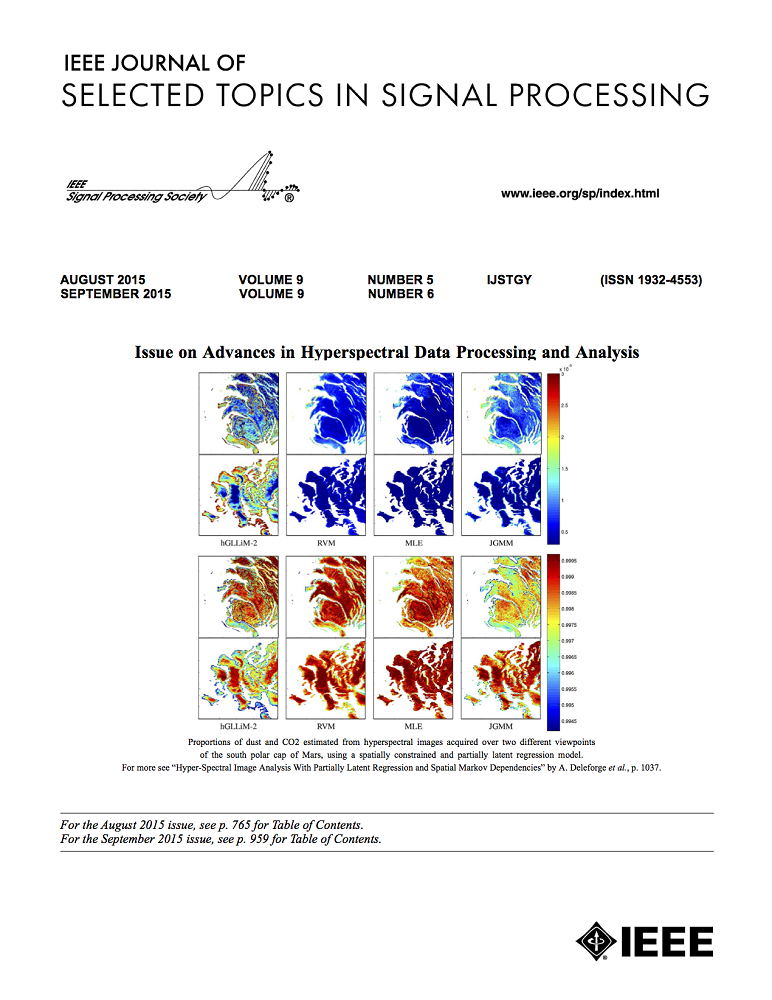利用合成可重构智能表面进行全息定位
IF 13.7
1区 工程技术
Q1 ENGINEERING, ELECTRICAL & ELECTRONIC
IEEE Journal of Selected Topics in Signal Processing
Pub Date : 2024-10-23
DOI:10.1109/JSTSP.2024.3435465
引用次数: 0
摘要
可重构智能表面(RIS)被提议用于控制下一代网络中复杂的无线环境。特别是,宽带 RIS 可在高精度位置感知中发挥关键作用,这就需要考虑元表面频率选择性的模型。本文介绍了带有 RIS 的宽带系统的一般信号模型,并建立了费雪信息分析方法,以确定带有 RIS 的宽带定位的理论极限。此外,还提出了合成 RIS,以减轻 RIS 散射特性引起的乘法衰减效应。还进一步研究了完全耦合和完全解耦等特殊情况。结果表明,与自由度(DOFs)较多、相位响应片断恒定的宽带 RIS 相比,采用所提模型的宽带 RIS 每个元素的相位响应为多项式,能提供更多的位置信息。此外,与静态 RIS 相比,速度诱导信息可使动态 RIS 提供更多位置信息。此外,动态 RIS 可以通过多次测量进行合成,从而优于大型 RIS。本文章由计算机程序翻译,如有差异,请以英文原文为准。
Holographic Localization With Synthetic Reconfigurable Intelligent Surfaces
Reconfigurable intelligent surfaces (RISs) are proposed to control complex wireless environments in next-generation networks. In particular, wideband RISs can play a key role in high-accuracy location awareness, which calls for models that consider the frequency-selectivity of metasurfaces. This paper presents a general signal model for wideband systems with RISs and establishes a Fisher information analysis to determine the theoretical limits of wideband localization with RISs. In addition, synthetic RISs are proposed to mitigate the multiplicative fading effect caused by the scattering property of RISs. Special scenarios including complete coupling and complete decoupling are further investigated. Results show that with the proposed models, a wideband RIS with a polynomial phase response per element provides more position information than those with more degrees of freedom (DOFs) in piecewise-constant phase response per element. Furthermore, velocity-induced information allows a dynamic RIS to provide more position information than a static RIS. Additionally, a dynamic RIS can be synthesized through multiple measurements to outperform a large one.
求助全文
通过发布文献求助,成功后即可免费获取论文全文。
去求助
来源期刊

IEEE Journal of Selected Topics in Signal Processing
工程技术-工程:电子与电气
CiteScore
19.00
自引率
1.30%
发文量
135
审稿时长
3 months
期刊介绍:
The IEEE Journal of Selected Topics in Signal Processing (JSTSP) focuses on the Field of Interest of the IEEE Signal Processing Society, which encompasses the theory and application of various signal processing techniques. These techniques include filtering, coding, transmitting, estimating, detecting, analyzing, recognizing, synthesizing, recording, and reproducing signals using digital or analog devices. The term "signal" covers a wide range of data types, including audio, video, speech, image, communication, geophysical, sonar, radar, medical, musical, and others.
The journal format allows for in-depth exploration of signal processing topics, enabling the Society to cover both established and emerging areas. This includes interdisciplinary fields such as biomedical engineering and language processing, as well as areas not traditionally associated with engineering.
 求助内容:
求助内容: 应助结果提醒方式:
应助结果提醒方式:


